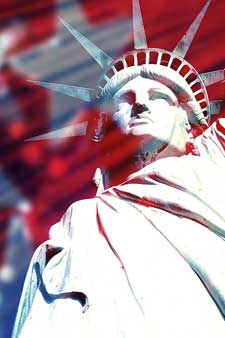|
The new Indian immigrant is inheriting a vastly different landscape than the one discovered by those who migrated before 1980. Most Indian immigrants at the time came to the United States as college students, dispersed in small campus towns across this vast land. A chance encounter with another Indian in a K-Mart, the shared temple of the newly set, was the launch of many long-lasting and enduring friendships. In those days of stringent foreign exchange controls, most Indian immigrants arrived with under $20 in their wallets; the braver ones might have squirreled away a couple of hundred dollars into a sock, past the prying eyes of the perennially suspicious Indian customs officials. What a difference 25 years make! In 2005, three times as many Indians immigrated to the United States than in the entire decade of the 1960s. The new immigrants discover thriving Little Indias in all the major metropolitan centers, with scores of restaurants, stores, and even movie theaters. Indians are no longer an exotic species with a strange accent that bemused residents of the Midwest. Communications with family in the early 1980s were limited to Aerogrammes (remember them?), rushed $3 per minute telephonic helloes and goodbyes, the rare report on famines and earthquakes to make the U.S. newspapers and that once in a decade visit to India. The fortunes of India and overseas Indians, especially in the United States, have also become inextricably intertwined. The millions of Indians in the Diaspora in Africa, Southeast Asia and the Caribbean in the last century had only tenuous connections with the homeland. By contrast, the global Indian of the 21st century is linked by instant Internet, 24-hour satellite television channels beamed out of India, penny calls and direct overnight flights. Indians have become prominent, even dominant, players in the motel, medical and technology sector. They constitute the largest foreign student group in the country; the largest foreign physician group; the largest foreign professional group; the largest motel owners group. They are the second largest immigrant group, after only Mexicans and the most highly educated, as well as the most affluent. In this month’s cover story, Ravi Akhoury, chairman and chief executive officer of Mackay Shields, a $40 billion investment firm, who first came to the United States in 1968 with $8 in his wallet, recalls just how hard it was to even land a job: “One change that I have seen in this time period is the change in the stature of India. It’s just grown and so it’s become not only much more acceptable, but actually desirable, to hire Indians. At this point it’s considered pretty cool to have an Indian working for you. You certainly couldn’t say that earlier.” The miraculous Indian American success story is a tribute both to the resilience of the greatest immigrant generation and the oversized heart of the nation that welcomed them. |
The Greatest Immigrant Generation

